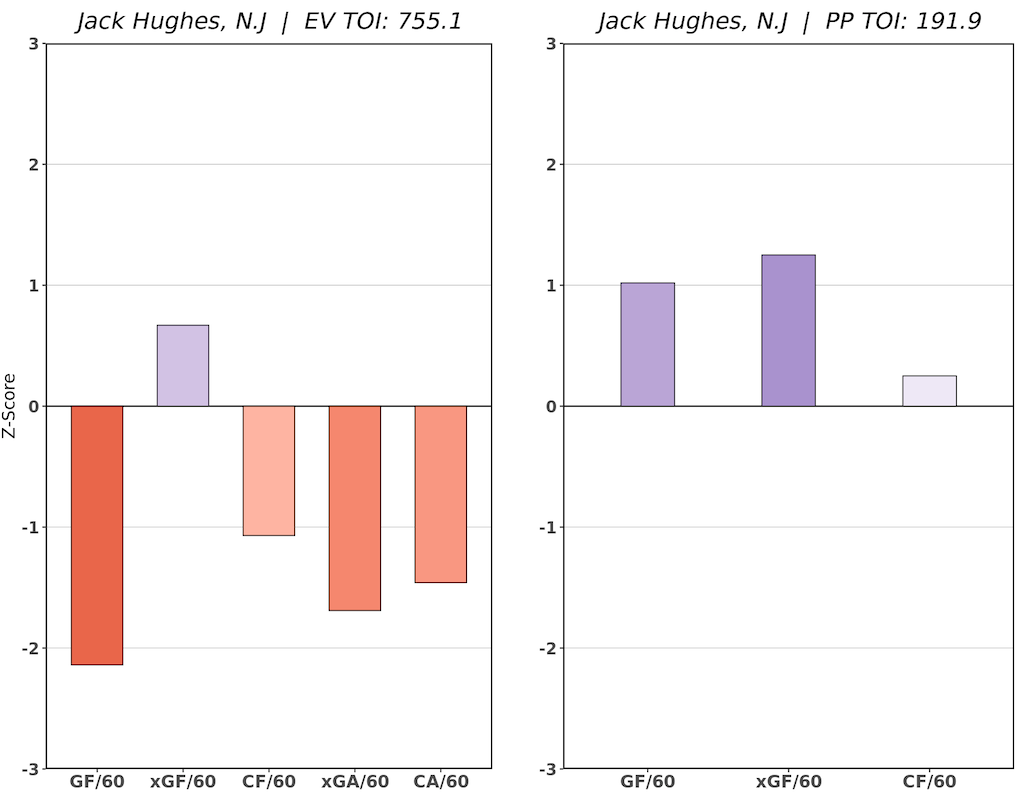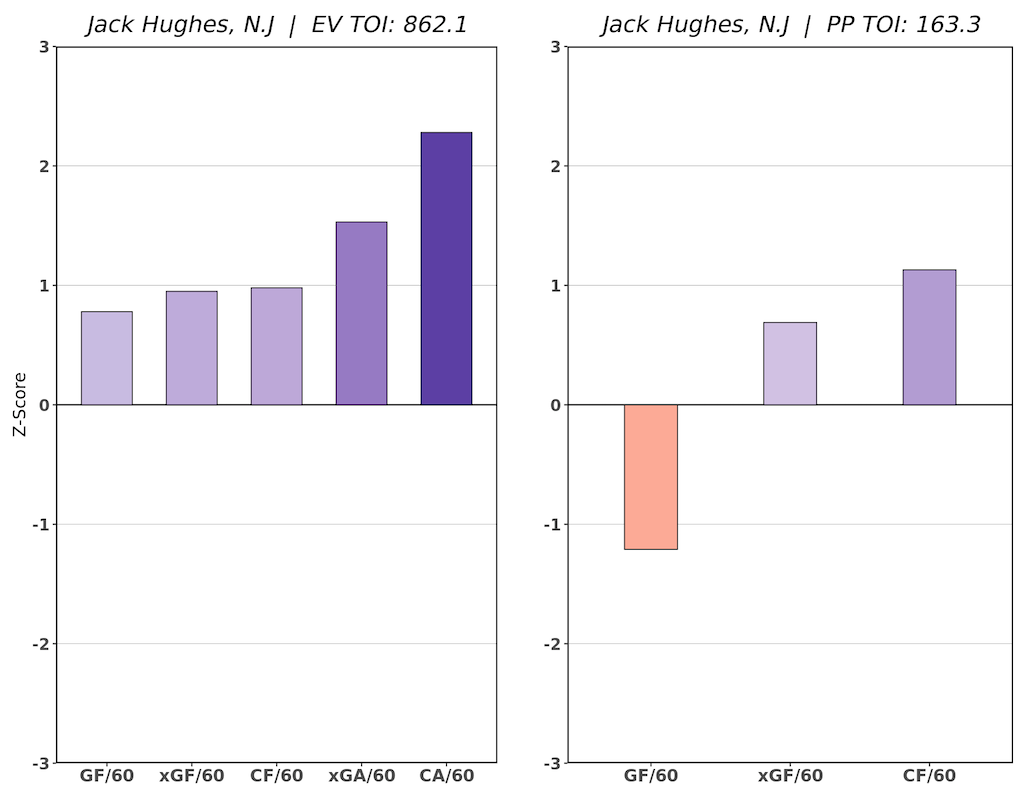It was a long and bizarre season for the New Jersey Devils, but it finally came to a close Monday night with a 4-2 loss to the Philadelphia Flyers. They closed out the campaign with a 19-30-7 record that came with a team-wide COVID outbreak, two different nine-game losing streaks, and a schedule unlike one they’ll ever play again.
But even with all the tumult, the Devils have plenty of positives to build on in what is sure to be a busy offseason for general manager Tom Fitzgerald. There are also areas of concern he will need to address if the Devils are to be competitive in 2021-22. Let’s look at some of the good and some of the bad from the team’s 2020-21 campaign.
Good: Improved 5-on-5 Play
The Devils had struggled quite a bit at 5-on-5 for a few years before this season. In 2019-20, they finished with the second-worst Corsi-for percentage (CF%) and the fourth-worst expected goals percentage (xG%) in the league. Those numbers only got worse after they fired head coach John Hynes early in Dec. 2019 too.
This season, it was a much different story at five-on-five. The Devils’ CF% of 50.5 percent ranked 12th-best in the league, while their xG% of 49.3 percent ranked 18th-best. And had it not been for a dramatic downturn in the team’s final nine games, those numbers would’ve been much better than they were to end the season.
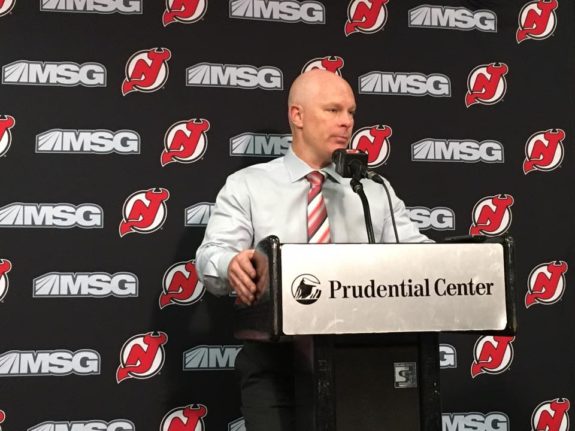
Before April 25, the Devils had a CF% of 52.2 percent and xG% of 51.3 percent across 47 games played, ranked 9th- and 12th-best in the league. There are a couple of reasons for that sharp downward swing to close the season. One would be the team shipped off key pieces in Kyle Palmieri, Travis Zajac and Dmitry Kulikov at the trade deadline, leaving them with one of the youngest rosters in the league. The other reason is on the back end, where Ty Smith, P.K. Subban and Jonas Siegenthaler missed time due to injuries or, in Siegenthaler and Subban’s case, COVID. That’s three of their top-6 defensemen out of action.
Given those reasons, it’s safe to bet on the 47-game sample being the norm in 2021-22 and not the results the Devils posted in the final nine games of the season. Those first 47 games show now-head coach Lindy Ruff has a good system in place and that it should fit the roster moving forward. That’s not something that could’ve been said about the previous regime, and whether it’s through external additions or player development, their 5-on-5 numbers should only improve from here on out.
Bad: Special Teams
For as well as the Devils played at five-on-five, the opposite is true of special teams. Their power play finished with a success rate of 14.5 percent, fourth-worst in the league. The three teams below them — the San Jose Sharks, Detroit Red Wings, and Anaheim Ducks — all missed the playoffs. You need to have a successful power play to be a successful team in the NHL, so what went wrong?
Related: Devils’ Top 10 Draft Picks
In simplest terms, the Devils weren’t able to generate much of anything on the man advantage. They averaged the third-least shot attempts per 60 minutes and the fourth-least expected goals per 60 minutes. That’s not even close to where they need to be to have a successful power play, but there are some things to consider.
The 2020-21 season was Mark Recchi’s first overseeing the power play. After the team’s COVID outbreak in February, they had little to no practice time to work on their power play due to the condensed schedule. The Pittsburgh Penguins’ power play had good underlying numbers under Recchi’s watch, so I’d expect a rebound for the Devils next season. They have the personnel to have a successful power play, and they should have plenty more practice time to tweak the system in 2021-22 than they did this season.
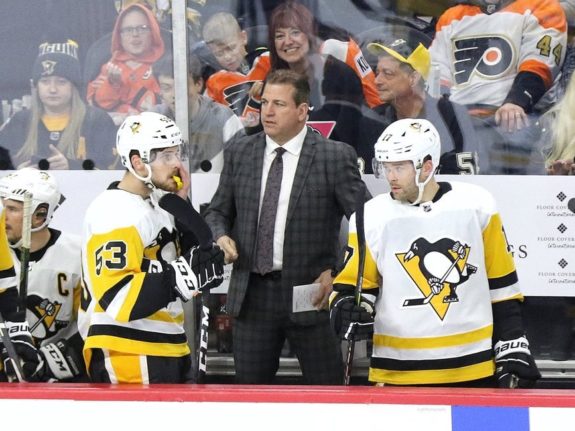
The penalty kill had been a strength for the Devils before this season. Unfortunately, it also sank to the bottom of the league along with the power play. They ended up killing off 70.9 percent of the penalties they faced, ranked last in the NHL. Their biggest struggles came in preventing high-quality chances, as they gave up the second-most expected goals in the league, with only the St. Louis Blues giving up more.
Part of the Devils’ penalty-killing struggles is because they’ve lost quite a bit of key personnel over the last year or so. Zajac and Andy Greene are with the New York Islanders. Blake Coleman is with the Tampa Bay Lightning. Ben Lovejoy retired. They were the team’s top penalty killers, so that’s a lot of faces to replace in a short amount of time. If anything, this season allowed the Devils to break in new players on the penalty kill like Michael McLeod, Nathan Bastian, and Yegor Sharangovich. Now that they’re getting accustomed to playing alongside each other, that could help their PK rebound in 2021-22.
Good: Young Guns Contribute
This was a common talking point around the Devils throughout the season, but their young players really stepped up. Here are their top scorers and their ages:
- Pavel Zacha: 35 points in 56 games (24 years old)
- Jack Hughes: 31 points in 56 games (19 years old)
- Sharangovich: 30 points in 54 games (22 years old)
- Jesper Bratt: 30 points in 46 games (22 years old)
- Miles Wood: 25 points in 55 games (25 years old)
- Janne Kuokkanen: 25 points in 50 games (22 years old)
- Ty Smith: 23 points in 48 games (20 years old)
Notice something? Everyone is 25 years old or younger, and that doesn’t even include Devils’ captain Nico Hischier, who had an injury-riddled season and played in only 21 games. There is truly a youth movement going on in New Jersey, and it doesn’t look like that’s going to stop any time soon. Top prospects such as Nolan Foote and Tyce Thompson got serious looks in the NHL and are developing. 2020 first-round picks Alexander Holtz and Dawson Mercer are working towards the NHL too.
Related: Devils News & Rumors: Daws, Comets & More
Even with some additions from outside the organization, the Devils should have one of the youngest rosters in the league next season. They need to continue developing their players, but if the progress of Kuokkanen, Hughes, Smith and Sharangovich are any indication, they’ll continue having plenty of young players contributing in the NHL.
Bad: Goaltending
Goaltending has been a problem for the Devils for quite some time. They signed Corey Crawford last offseason to back up Mackenzie Blackwood, but he had a change of heart and hung up the skates before the season began. That left them without a proven backup behind Blackwood and made Scott Wedgewood the de facto 1B.
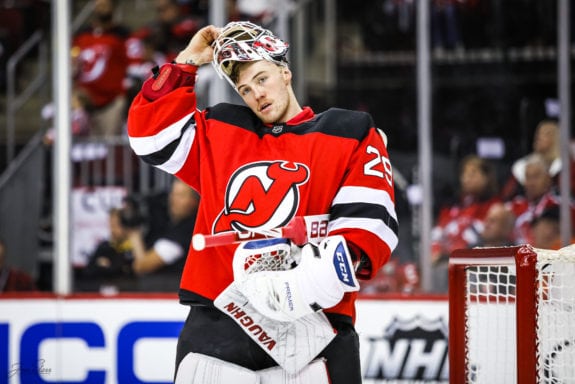
The Devils’ goaltending had looked quite solid to start the season, but things took a drastic turn for the worst after the team’s COVID outbreak. From Feb. 20 to the end of the season, the team’s save percentage (SV%) of .878 ranked second-worst in the league to the Flyers. That was largely due to Blackwood’s struggles, though he had a rough bout of COVID himself, so it’s hard to blame him. Fortunately, he had a good close to the season and finished with a .909 SV% across his final eight starts.
Wedgewood had some nice moments filling in for Blackwood, especially since he played a role he wasn’t expected to before the season began. He’s a good option to have as a no. 3 in the organization, but the Devils need to find a legit 1B this offseason. The free-agent class will have names such as Antti Raanta, James Reimer, and Jaroslav Halak, to name a few, who are reliable backups. I’d expect the Devils to go after one of them, if not one of the other quality goaltenders who should be available.
Good: Jack Hughes
Hughes gets his own section because of his importance to the Devils’ rebuild. He struggled mightily as a rookie in 2019-20, but he managed to erase any doubts you had about him this season. He only produced a 45-point pace over 82 games, but the points will come for him if he keeps on this upward trajectory.
Hughes’ CF% of 55.8 percent led the team, as did his xG% of 54.7 percent. He also led the team in takeaways with 49 — the next closest Devil to him was Michael McLeod, who had 24. And in fact, Hughes’ 49 takeaways were second-most in the league to only Leon Draisaitl. Not even Sidney Crosby or Mark Stone, two of the game’s elite two-way forwards, had more takeaways than Hughes. It’s no surprise that his defensive game took off because of his takeaways. And that overall two-way improvement led to a significant jump in his even strength impact from a season ago:
In terms of goals and wins above replacement, Hughes was the team’s most valuable player this season. His GAR of 9.5 ranked first on the team, as did his WAR of 1.7. The Devils have themselves a budding star, and he should only get better as he gets older and adds more strength to his frame. Once he does, he’ll be among the NHL’s best players.
Turning a Corner
It was another tough season for the Devils, and it ends with them missing the playoffs for the third consecutive season. But unlike previous years, there is a sense of optimism around the organization. Fitzgerald’s vision for this team is quite clear; he wants to mold it in the same age group as Hischier and Hughes. Some of those pieces are already starting to bear fruit, with Sharangovich and Kuokkanen being examples. Zacha had a breakout campaign, Bratt solidified himself as a top-6 winger, and they have a defenseman to build around in Ty Smith.
Now it’s about adding more complementary pieces around those players, and Fitzgerald has plenty of assets to do so. The Devils have two first-round picks at the 2021 Draft (8 picks in total), a deep prospect pool, and $37 million in cap space. It should be a busy offseason in New Jersey, and if done right, it should lead to them taking a noticeable step forward in 2021-22.
* * *
Advanced stats from Natural Stat Trick, Evolving-Hockey
